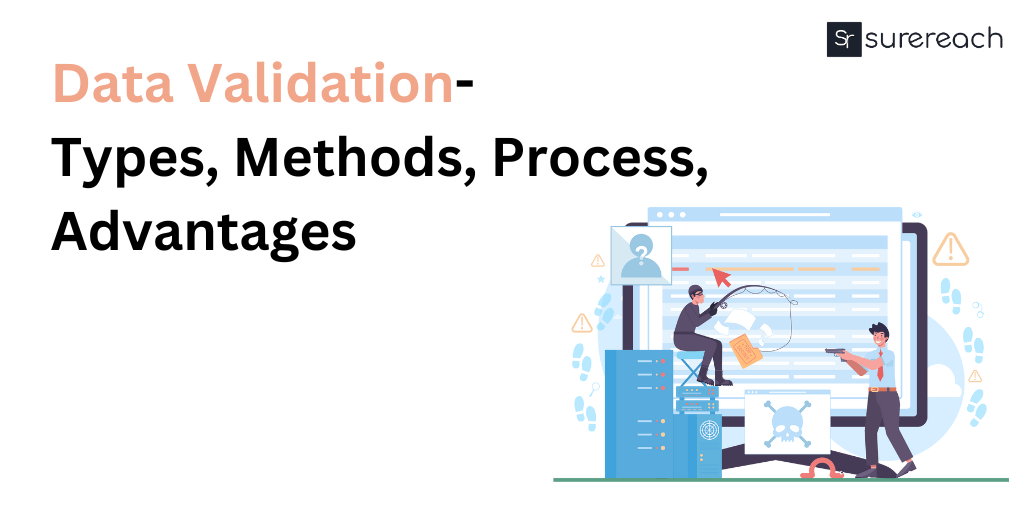Data Validation
Information approval is the most common way of guaranteeing the respectability, exactness, and construction of information before it is utilized in a business capability. The outputs of adequacy of data operations can be utilized to do data analytics, business intelligence, or machine learning model training. It can also be used to assure data integrity in financial accounting and regulatory compliance.
Data can be validated in a variety of ways, including by type, constraint, structure, consistency, and code validation. Each method of data valid is intended to ensure that the data meets the necessary criteria to be usable.
Data is linked to data quality. Adequacy of data can be used to assess data quality by ensuring that a particular data set is supplied with information sources of the greatest quality, authority, and accuracy.
Data validation is also utilized in application routines, such as spell checking and criteria for strong password generation.
What is Data Validation?
These operations may comprise machine learning or artificial intelligence models, data analytics reports, or business intelligence dashboards. Validating the data ensures that it is correct, thus any systems that rely on a validated data set will be as well.
Data Validation Types
Data validation is also required for data to be valuable within an organisation or for a specific application action. For example, if data is not in the proper format to be ingested by a system, it cannot be used effectively, if at all.
As data goes from one area to another, different needs arise depending on how the data is used. guarantees that the data is accurate in specific settings. The appropriate type of data valid renders the data useful.
-
- Structured validation- It guarantees that data adheres to a particular data format, structure, or schema.
- Consistency validation- It ensures that data styles are consistent. For example, it checks that all values are given with two decimal points.
- Code validation- It validates that the codes used for various data inputs are correct. For example, it looks for a nation code or North American Industry Classification System (NAICS) codes.
Sign up and get 20 credits for free!
We have 3 million+ contacts stored to connect you with prospects all over India
Data Validity- Process
1.There is no need to validate samples using iData.
Many adequacy of data procedures begin by determining your data using a data sample. We eliminate the need to determine using a sample set because iData can validate 100% of all data, even if you have vast amounts of data.
2.Validate your database.
To get the best results, make sure that all of the necessary data is in your existing database before migrating it. Determine the number of records and unique IDs, then compare the source and destination data fields. Ensure that only required data is entered into your target database, and that no required data is unintentionally removed.
3.Validate the data format.
Determine the general ‘health’ of your data and the adjustments that will be required to make the source data match the schema in your destination. Look for incongruent or incomplete counts, duplicate data, poor formatting, and null field values.
Benefits of Data Validation
Some of the advantages of data validation are as follows:
- It is cost-effective since it saves enough time and money by collecting datasets.
- Because it removes duplicates from the full dataset, it is straightforward to use and works with other procedures.
- Data can directly contribute to company improvement when information is collected more effectively.
- It is composed of a data-efficient structure that includes a standard database and cleaned dataset information.
Limitations of Data Validation
Here are some of the limitations
- There is a possibility of disruption due to the organization’s many databases. As a result, data may be out of date, causing challenges when validating it.
- When you have a huge database, Data Validity can be time-consuming because you must do it manually.
Challenges of Data Validation
Here are some of the constraints of Data
- There is a possibility of disruption due to the organization’s many databases. As a result, data may be out of date, causing challenges when validating it.
- When you have a huge database, Data Validity can be time-consuming because you must do it manually.
Data Validation- Key Takeaways
- Data validation guarantees that information entered into a system or database is correct, full, and follows predetermined rules and limitations.
- Before accepting or processing data, it is necessary to check for errors, inconsistencies, or erroneous values.
- Data validation is often performed at the moment of data entry or collection, using input validation rules, format checks, range checks, or other automated techniques.
- Data validation seeks to avoid the introduction of inaccurate or incomplete data into the system, assuring data quality and integrity from the beginning.
Conclusion
In this article, you learned about . This article also discussed the different types and methods of Data Validity, how to execute it, and its advantages and disadvantages. Now that you’ve learnt about it, you should grasp how to replicate data as the amount grows. You can connect to Surereach API to make your adequacy of data process easier.








Sachin Bhola
More posts by Sachin Bhola